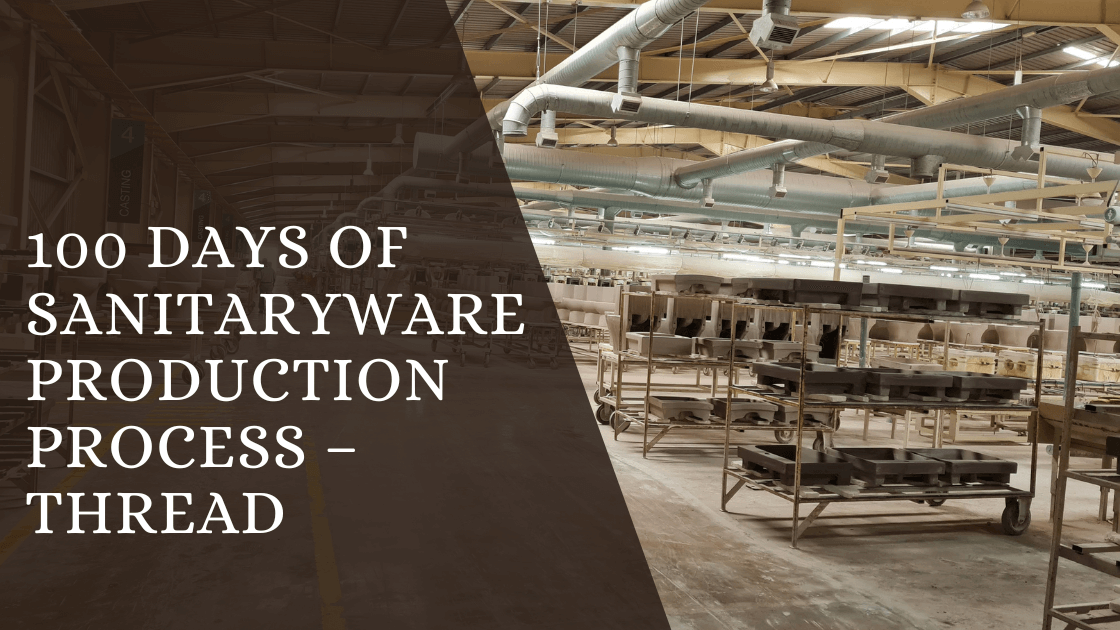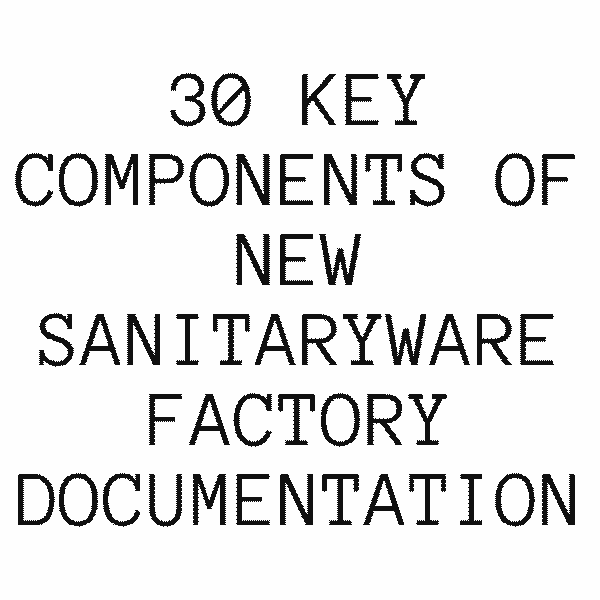Exploring 7 Essential Yields in Sanitaryware Manufacturing
Different yields serve as crucial indicators of performance, pinpointing where improvements can be made and highlighting the overall health of the sanitaryware manufacturing process. In this article, we will delve into the 7 essential yields used to measure and identify the efficiency in sanitaryware production.
When calculating these yields in sanitaryware production under the assumption that Work In Progress (WIP) inventory levels remain constant, it simplifies the calculations of process efficiency by eliminating the variable impact of fluctuating WIP inventories. However, it’s important to note that in the real world, WIP levels can fluctuate due to various factors such as production planning changes, demand variability, and operational issues.
[toc]Casting Yield:
Sanitaryware Casting yield is a measure of the efficiency and quality of the casting Department. It is calculated by determining how many pieces Casted Vs How many Pieces moved to Dryer or Glazing. To calculate the casting yield, you would follow a simple formula:
Casting Yield = (Number of Good Pieces sent to Dryer / Total Pieces Cast) * 100
For example, if out of 100 pieces cast, 96 pieces are deemed suitable to be sent to the next process, the casting yield would be:
Casting Yield = (96 / 100) * 100 = 96%
This means 96% of the cast pieces were of acceptable quality to proceed, indicating the efficiency of the casting process and the quality control measures in place.
Glazing Green Yield:
The calculation of glazing yield in sanitaryware production is determined by dividing the number of pieces successfully glazed and sent for firing by the total number of pieces received from the casting stage, then multiplying by 100 to get a percentage.
This helps to determine the rejection rate after the Drying process.
The formula to calculate the glazing yield in sanitaryware production is:
Glazing Yield = (Nos. of Pieces Glazed & Sent to Firing / Total Nos. of Pieces Received from Casting) * 100
Green Yield:
The green yield in sanitaryware production is a critical metric used to gauge the overall efficiency of the Greenware stages within a factory. This yield is calculated by dividing the total number of good pieces loaded into the kiln by the total number of pieces casted.
The formula to calculate the green yield in sanitaryware production is:
Green Yield =(Total Good Pieces Loaded into the Kiln\Total Pieces Casted) * 100
This formula yields the green yield as a percentage, providing a measure of the efficiency and quality control in the greenware stages of the sanitaryware manufacturing process. High percentages indicate a successful transition of pieces from casting to kiln with minimal waste and defects.
Achieving a greenware yield in the range of 90% to 96% is indicative of strong process control in the Slip, Casting & Drying stages. Such high yield percentages reflect a well-managed manufacturing process, where waste and defects are minimized, and the majority of casted pieces successfully meet quality standards. The target Green will vary based on the complexity of the Products Produced.
First Fire Yield:
One of the most crucial metrics frequently analyzed in a sanitaryware factory is the first fire yield. This yield is often tracked it in real-time to facilitate immediate process improvements. The first fire yield measures the efficiency and success of the quality process.
It is calculated by dividing the total number of good pieces that emerge from the first firing by the total number of pieces inspected after this first firing phase.
First Fire Yield=(Total Good Pieces from the First Firing / Total Pieces Inspected in First Fire) × 100
High first fire indicated less rework and Rejects.
Second Fire Yield:
The Second Fire Yield in sanitaryware production is a measure of efficiency Rework process, which typically involves second fired pieces after repair. This yield is crucial for assessing the effectiveness of the repair work and the final aesthetic qualities of the sanitaryware products. The calculation of the Second Fire Yield is similar in concept to the First Fire Yield but focuses on the outcomes of the second fired pieces. Here’s how it’s calculated:
Second Fire Yield=(Total Good Pieces from the Second Firing/Total Pieces Inspected in Second Fire)×100
Firing Yield:
The significance of the Firing Yield in controlling production costs in sanitaryware manufacturing is crucial. A higher Firing Yield indeed correlates with lower production costs because it signifies a higher efficiency in the firing process, leading to fewer losses and reworks.
The Firing Yield as a percentage, reflecting the efficiency of the entire Firing process. It indicates the proportion of pieces that meet quality standards after both firing stages relative to the initial quantity of pieces loaded for the first firing.
Firing Yield= ( Total Good Pieces from First Fire+ Second Fire/ Total Pieces Loaded for First Fire)×100
Global Yield:
The Global Yield in sanitaryware production is a comprehensive metric that evaluates the overall efficiency and effectiveness of the entire manufacturing process.
The Global Yield is crucial for assessing the cumulative impact of all process efficiencies and inefficiencies on the production.
The Global Yield in sanitaryware production is calculated by dividing the total number of good pieces sent to the warehouse (ready for shipment) by the total number of pieces casted at the beginning of the production process. This calculation provides the Global Yield as a percentage:
Global Yield= (Total Good Pieces Sent to Warehouse/ Total Pieces Casted) × 100
Conclusion:
In conclusion, Yield metrics such as Casting Yield, Glazing Green Yield, Green Yield, First Fire Yield, Second Fire Yield, Firing Yield, and Global Yield are for enhancing the efficiency, quality control, and cost-effectiveness of sanitaryware production processes. These yields collectively provides overview of the manufacturing efficiency at each stage. By continuously monitoring and troubleshooting to improve these yields, manufacturers can ensure the sustainability of their production processes and the overall profitability of their operations.
Written by : Venkat Mani
Venkat Mani is a Ceramic Engineering Graduate from India, working in Sanitaryware production line for 15 years. He shares Meaningful content related to sanitaryware professionals that others find useful.
Different yields serve as crucial indicators of performance, pinpointing where improvements can be made and highlighting the overall health of […]
A quick overview of the topics covered in this article.



